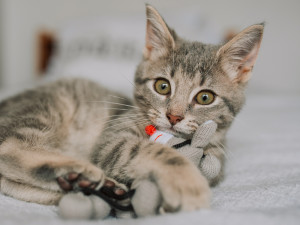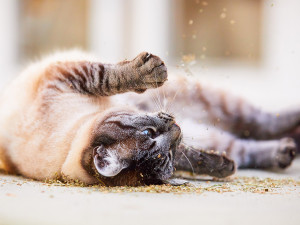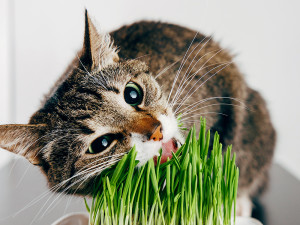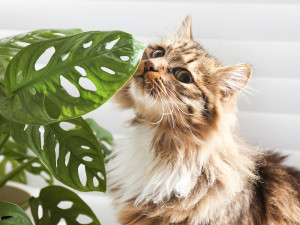This Catnip Alternative Will Blow Your Cat’s Mind
If cats had their own TikTok trends, this would be one.
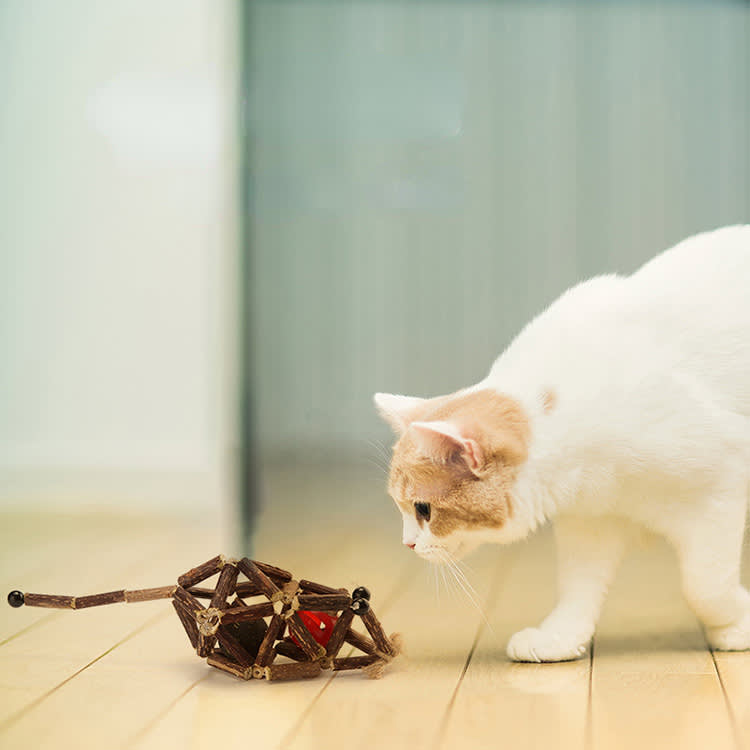
Share Article
Catnip might just be the hack to cat parenthood. It mimics feline sex hormones and makes cats feel euphoric, causing them to rub and scratch and roll around on or with whatever objects it is added to. It’s a great tool for encouraging healthy cat behaviors, like playing or scratching on a scratching post; can reduce stress and sometimes even pain; and is often added to cat products ranging from toys to pheromone sprays. It’s pretty miraculous stuff. Unless, of course, your cat isn’t into it, which many cats are not. In fact, just last year, a study was published in the academic journal Frontiers in Veterinary Scienceopens in a new tab, which reviewed and summarized the results of a number of third-party experiments testing the effectiveness of catnip and found that anywhere from 40 to 80 percent of cats do not respond to it at all. That’s a lot of cats.
Catnip not working for your cat? Try silver vine.
But there is an alternative. The same study found that silver vineopens in a new tab, a plant native to mountainous regions of China, Japan, and Korea, produces an identical response and works on 90 percent of cats, including those who couldn’t care less about catnip. This supports the findings of a 2017 studyopens in a new tab, which determined that approximately 75 percent of cats that did not respond to catnip did respond to silver vine. In other words, even if catnip does nothing for your kitty, silver vine probably will.
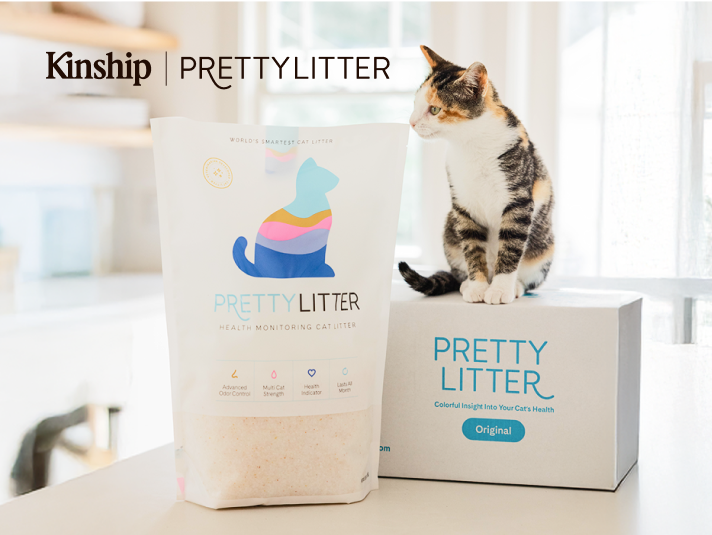
Save on the litter with color-changing tech that helps you better care for your cat.
There are exceptions, of course. Pregnant females and kittens are often completely unresponsive to either catnip or silver vine. Given that the active chemical component in these plants — nepetalactol — mimics sex hormones, it makes a certain sense that pregnant females would be unmoved by it. And per “ Dealing with Stress in Cats: What is New About the Olfactory Strategyopens in a new tab,” kittens are non-responsive because that part of their brains — their opioid system — is not fully developed yet.
Is silver vine totally safe for cats?
“Silver vine is considered safe and non-toxic for cats,” Dr. Amy Fox, a veterinarian and veterinary medical writer, tells Kinship. Plus, cats cannot become “addicted” to these plants. The above study looked at experiments involving black-footed and shelter cats, which found that their interest in these plants actually waned over a five-day period, indicating “habituation after continuous exposure.” For this reason, you actually want to limit free access to these plants in order to maintain their attractiveness and effectiveness in your cat. That means giving your cat a piece of silver vine to play with until they get bored and then putting it away for a while.
Dr. Fox does caution that you should keep an eye on your cat while they are playing with the silver vine, especially if they are playing with it in the form of a stick of dried wood. “Cat parents should always supervise cats when they are playing with the sticks as they often chew on them and could be at risk for injury if they break off large pieces and swallow them,” she says.
Per the Humane Society of the United States opens in a new tab(HSUS), the “catnip response” usually lasts around 10 minutes before tapering off. After that, cats need at least 30 minutes without smelling catnip before they will become susceptible to its effects again. The same probably goes for silver vine, but that sort of testing has yet to be done. Fear can also inhibit a cat’s response to scent, so it is important to make sure your cat is relaxed and comfortable before introducing this kind of olfactory stimulation.
Your cat might actually respond to catnip and silver vine — you just don’t notice.
So, what if your cat is one of the few who responds to neither catnip nor silver vine? According to the authors of “ Dealing with Stress in Cats: What is New About the Olfactory Strategyopens in a new tab,” it’s possible that what looks like a non-response is actually just a different kind of response. While most cats appear to have an active response to catnip or silver vine, the rest could simply be responding passively and displaying what the study authors call a “sphinx-like position,” with reduced vocalization and activity post-exposure. At least, that’s the theory.
Experimentation needs to be done to know for sure. But if you set a piece of silver vine by your cat, and they take a whiff and then just hunker down, don’t assume they aren’t having a response. It’s possible they are just blissing out, like Seth Rogen taking a bong hit on the couch.

Charles Manning
Charles Manning is an actor, writer, and fashion/media consultant living in New York City with his two cats, Pumpkin and Bear. Follow him on Instagram @charlesemanningopens in a new tab.
Related articles
![Cat sitting on a window sill eating cat grass]() opens in a new tab
opens in a new tabSweet Greens: The Best Cat Grass Grow Kits
Not to be confused with catnip (or other buds).
![A pile of cat toys in the shape and colors of food.]() opens in a new tab
opens in a new tabTreat Your Cat to These Matcha and Mochi-Inspired Catnip Toys
Finally. Toys that foodies, er, felines, will appreciate.
![Cat chewing on cat grass]() opens in a new tab
opens in a new tabThe 10 Best Non-Toxic House Plants for Cats
Cats love the crunch of a houseplant. These will do them no harm.
![cat sniffing a plant]() opens in a new tab
opens in a new tabHousehold Plants That Are Toxic to Cats
These plants might be beautiful, but they’re deadly to feline foragers.
![Dog sitting on a couch in a living room with plants]() opens in a new tab
opens in a new tab5 Plants That Are Toxic to Your Dog
Thriving plants are spring’s whole thing—but these offenders can be perilous to pets.
